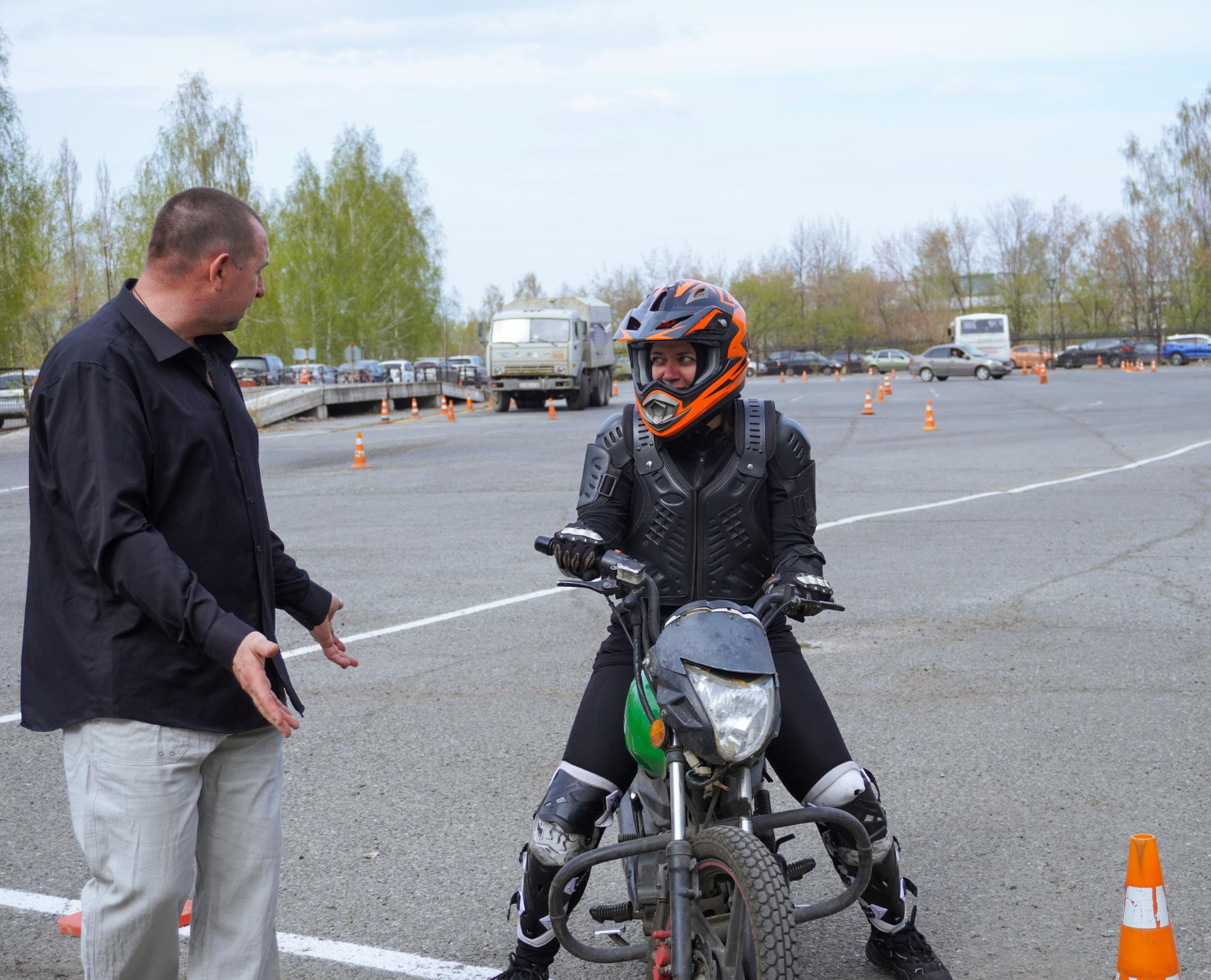When you’re getting ready to sit your Queensland motorcycle licence test, there are a few habits that can make or break your results. One of the most commonly overlooked is the head check. It seems simple enough to just turn your head and check your blind spot, but many riders either forget to do it or don’t do it well enough to satisfy the examiner. As small as it might seem, this one move can affect whether you pass or not.
The head check isn’t just a formality on the test sheet. It’s part of riding because it keeps you and others on the road safer. Getting it right shows that you understand your blind spots and how to manage them. Just as importantly, it shows that you’re in control of your awareness, which is a big part of safe riding. If you can use head checks automatically, without stopping to think about it, you’ll go into the test with a clearer head.
Why Head Checks Matter
Let’s keep this one simple. A head check is a quick and purposeful glance over your shoulder to cover your blind spot. Your mirrors don’t show everything behind or beside you. When you’re changing lanes, turning, or moving off, a head check helps you see what could be hiding just outside your view. Missing it, or doing it too late, can put you in danger and cost you points in the test.
In your Queensland motorcycle licence test, the examiner will be watching closely to make sure you’re doing head checks at the right moments. They have to be visible enough for the examiner to see, but smooth enough that you’re still holding your line and balance.
You’ll be expected to do a head check before doing things like:
– Turning at intersections or roundabouts
– Changing lanes or merging into traffic
– Moving off from a stationary position
– Overtaking parked cars or obstacles
The more natural your head checks are, the better. When you don’t need to think twice about them, that’s when they hit the mark on your test. On test day, nerves can throw you off. You might focus more on staying balanced or managing the bike and forget the simpler bits. That’s why building head checks into your habits ahead of time can really help.
How To Perform Proper Head Checks
Doing a proper head check isn’t just about moving your head. It’s about timing, staying stable, and being clear about what you’re doing. The glance should be fast but recognisable, covering your blind spot without pulling your shoulders or shifting your ride. Start slowly, practise with purpose, and work it into how you ride every time.
Here’s how to do a strong head check:
1. Keep a straight line with the handlebars first.
2. Glance over your shoulder, looking into the blind spot in the direction you’re moving.
3. Keep your torso still and don’t let the bike wander.
4. Bring your eyes back to the front before steering or using any controls.
5. Don’t rely only on mirrors. They miss a chunk of your view.
Use head checks as part of your regular riding routine. If you’re about to change lanes, your flow should be:
– Signal
– Mirror check
– Head check
– Move if clear
This kind of routine helps riding feel smoother, and by the time your test comes around, you won’t have to think twice. That’s what the examiner wants. They want to see that you’re not ticking boxes but riding with real awareness. Head checks show that clearly.
Common Mistakes To Avoid
Even with a solid understanding of head checks, bad habits can creep in. Whether from nerves, lack of practice, or rushing in high-pressure moments, these simple errors can trip you up during the Queensland motorcycle licence test.
Here are some of the common ones:
– Turning too late: Head checks need to be done before any movement. If it’s rushed or delayed, you won’t have time to respond if there’s a hazard.
– Too subtle: A small eye flick isn’t always enough. If the examiner can’t see you do it, it might not count.
– Over-rotating: Turning your whole upper body can throw off your balance or cause a slight steer, especially at slow speeds.
– Forgetting the routine: Under stress, you might jump straight from mirror to movement. Without a head check, you’re missing a key part of the safety check.
– Only using mirrors: Mirrors help, but they don’t cover your blind spot. Relying on them alone is never enough.
To avoid these, break each movement down and practise it until every action feels automatic. Start with the basics, out loud if it helps: signal, mirror, head check, go. Repeat them over and over, so they stay stuck in your muscle memory way before test day.
Practising Head Checks For Test Success
Getting confident with head checks takes more than just knowing when to use them. You’ve got to build them into your everyday riding, even in quiet or familiar settings. The more you do them, the more natural they’ll feel. That way, when the test starts, it won’t feel like something extra to remember.
Here are a few ways to help you practise:
1. Start during car trips if you’re driving. Try mirror checks and shoulder glances before turns or merges. It builds awareness and muscle memory.
2. Head to a quiet area on your bike, like an empty street or car park. Create mock test routes and practise stops, lane changes, roundabouts and more. Rehearse that full sequence: signal, mirror, head check.
3. Set up a pretend course using chalk or cones in an open lot. Add marked corners and narrowing paths to simulate test-like situations. Make head checks part of every planned movement.
4. Ride with a buddy who can watch you. Ask them whether your head check was clear enough and happened at the right time.
5. Try using a helmet cam to review your ride. Look back on areas where you skipped steps or rushed. It helps you self-correct ahead of test day.
Practice makes head checks easier, smoother, and more natural. You’ll stop overthinking them, which is exactly where you want to be when you face the examiner.
Preparing With Confidence
It’s easy to focus only on throttle control or manoeuvres while preparing for your Queensland motorcycle licence test, but awareness matters just as much. Head checks might seem basic, but they send a strong message about your scanning habits and attitude to safety. They help you ride smart, and that’s what examiners are watching for.
A clear head check, made at the right time, can be the difference between a near miss and a smooth ride. On your test, it could also be the difference between a pass and having to rebook.
The more you practise, the more second-nature it becomes. Build these habits while you ride every day, and you’ll walk into your test already used to doing exactly what’s expected. It’s smart training for the test, and even better preparation for future riding. Head checks aren’t just about passing. They’re about seeing the whole picture every time you take off down the road.
If you’re looking to feel more confident and stay sharp on the road, structured practice can make all the difference. At Stay Upright, we offer rider training courses specifically designed to help you prepare for your Queensland motorcycle licence test while building safe habits that last well beyond exam day.



